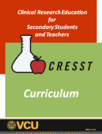
This is the second paft of the Clinical Research Education for Secondary Students and Teachers.
- Subject:
- Research
- Material Type:
- Lesson Plan
- Author:
- Dr. Lisa Abrams
- Date Added:
- 08/16/2023

This is the second paft of the Clinical Research Education for Secondary Students and Teachers.
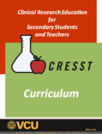
This is the fourth part of the Clinical Researcg Education for Secondary Students and Teachers.

The space industry has been creating innovative technologies for decades. Students in this lesson will explore the world of space technologies and how they play a role in our everyday life.
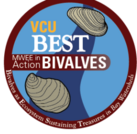
Once students have generated a conclusion, they should work in small groups or as a class to brainstorm and evaluate solutions, and then take action! Throughout this process, teachers play an important facilitation role by forming groups, moderating, and answering questions, while students drive the decision-making, planning, and implementation in an age-appropriate way.

Video Description: What causes the phases of the Moon? From New Moon to Full Moon, the Earth-Sun-Moon system is responsible for the Moon’s changing phases. Learn more about rotation, revolution and this repeatable pattern. Video Length: 3:13. NASA eClipsTM is a suite of online student-centered, standards-based resources that support instruction by increasing STEM literacy in formal and nonformal settings. These free digital and downloadable resources inform and engage students through NASA-inspired, real-world connections.NASA eClips Our World videos (grades 3-5) help students understand the differences between science (the natural world) and engineering (the designed world). These video segments supplement elementary learning objectives not only in science, technology, engineering and mathematics, but also in reading, writing, visual and performing arts.

Video Description: The Moon impacts Earth through tides and moonlight. NASA missions to the Moon continue to help us discover more about our nearest neighbor. Learn more about Moon mapping and resources. Video Length: 2:49. NASA eClipsTM is a suite of online student-centered, standards-based resources that support instruction by increasing STEM literacy in formal and nonformal settings. These free digital and downloadable resources inform and engage students through NASA-inspired, real-world connections.NASA eClips Our World videos (grades 3-5) help students understand the differences between science (the natural world) and engineering (the designed world). These video segments supplement elementary learning objectives not only in science, technology, engineering and mathematics, but also in reading, writing, visual and performing arts.

Video Description: Have you ever wondered where food comes from? Learn how Dr. Catherine Nakalembe uses NASA satellite data to show the health and location of crops around Our World. Maps created from these data help people become more food secure. You can help, too. Using the GLOBE Observer App, you can help scientists validate satellite data by describing land covering through the Adopt a Pixel program. Video Length: 5:23. NASA eClipsTM is a suite of online student-centered, standards-based resources that support instruction by increasing STEM literacy in formal and nonformal settings. These free digital and downloadable resources inform and engage students through NASA-inspired, real-world connections.NASA eClips Our World videos (grades 3-5) help students understand the differences between science (the natural world) and engineering (the designed world). These video segments supplement elementary learning objectives not only in science, technology, engineering and mathematics, but also in reading, writing, visual and performing arts.
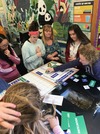
Lesson Length: 1-2 hoursGrade Level: 6-8Students will explore population interaction and impacts on an ecosystem through a breakout box activity grounded in engineering design thinking. Students will learn about how bees are interrelated within an ecosystem by solving clues to save a hive from a breakout box and they will engineer a plan to incorporate bees into a community that addresses concerns, benefits and trade offs for the bees and the humans.This material is based upon work supported by the National Science Foundation under Grant No. 1657263. Any opinions, findings, and conclusions or recommendations expressed in this material are those of the author(s) and do not necessarily reflect the views of the National Science Foundation.
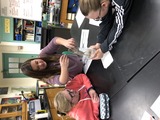
Lesson Length: 1-2 hoursGrade Level: 6-8Students build a water filter with a variety of natural and commercially produced materials. First they test the materials and then choose which to layer together themselves based on material performance. Students learn about water resources and engineered supports for the earth’s water systems and the impacts on environmental and human health. Engineering connections are highlighted throughout the lesson. Special thanks to Giles County, VA STEM Coordinator, Christina Martin, whose unit on The Global Water Crisis was the inspiration for this lesson. Also thanks to the NASA Water Filtration Challenge (https://www.jpl.nasa.gov/edu/teach/activity/water-filtration-challenge/) that helped guide Christina in the development of her lesson.This material is based upon work supported by the National Science Foundation under Grant No. 1657263. Any opinions, findings, and conclusions or recommendations expressed in this material are those of the author(s) and do not necessarily reflect the views of the National Science Foundation.
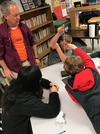
Lesson length: 1-2 hoursGrade level: 6-8Students use a recipe to create bouncy balls and then measure the bounce of their ball to test damping qualities of different materials. Students practice using the scientific method and think about how engineers might use it.This material is based upon work supported by the National Science Foundation under Grant No. 1657263. Any opinions, findings, and conclusions or recommendations expressed in this material are those of the author(s) and do not necessarily reflect the views of the National Science Foundation.
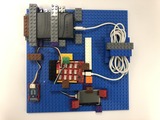
Teachers and students can learn how to put together a Microcontroller Kit with an environmental conditions sensor that measures temperature, humidity, pressure and altitude and could be used for multiple experiments and shared collectively amongst departments or schools.This material is based upon work supported by the National Science Foundation under Grant No. 1657263. Any opinions, findings, and conclusions or recommendations expressed in this material are those of the author(s) and do not necessarily reflect the views of the National Science Foundation.
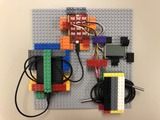
Teachers and students can see an example of how to put together a Microcontroller Kit with a Temperature sensor that could be used for multiple experiments and shared collectively amongst departments or schools.This material is based upon work supported by the National Science Foundation under Grant No. 1657263. Any opinions, findings, and conclusions or recommendations expressed in this material are those of the author(s) and do not necessarily reflect the views of the National Science Foundation.
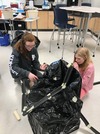
Lesson Length: 1-2 hoursGrade Level: 6-8Students learn about potential and kinetic energy as it relates to mountain roads. The activities are grounded in engineering design thinking as it relates to engineered roads and road repair. Also included is a challenge activity with renewable energy Snap Circuit simulations.This material is based upon work supported by the National Science Foundation under Grant No. 1657263. Any opinions, findings, and conclusions or recommendations expressed in this material are those of the author(s) and do not necessarily reflect the views of the National Science Foundation.
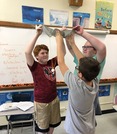
Lesson Length: 1-2 hoursGrade Level: 6-8Students learn about relationships between earth and space including elements of our solar system, gravity, escape velocity, and space exploration though a breakout box experience. They solve clues about space and conditions needed to support life on a planet and perform tests related to space travel. Clues for opening locks on the breakout box are purposefully challenging to simulate the struggle engineers often grapple with when problem solving.This material is based upon work supported by the National Science Foundation under Grant No. 1657263. Any opinions, findings, and conclusions or recommendations expressed in this material are those of the author(s) and do not necessarily reflect the views of the National Science Foundation.